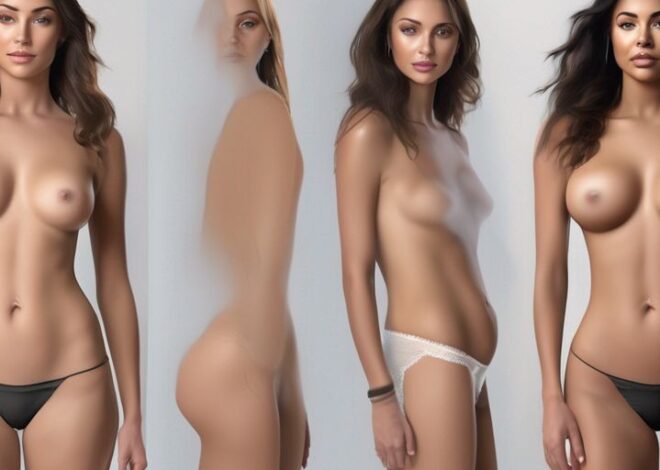
The Access and Ethics of Free Undressing AIs
The development of free undressing AI technologies has sparked a significant debate surrounding their accessibility and ethical implications. These technologies, which can digitally remove clothing from images of individuals, raise questions about privacy, consent, and the impact on societal norms. This article delves into the various aspects of undressing AI, examining the technological advancements, ethical considerations, and the broader implications of their use.
Key Takeaways
- Undressing AI technologies, such as Nudify.Online, use advanced algorithms to digitally remove clothing from images, raising ethical and privacy concerns.
- The market for undressing AI includes various key players and has seen significant technological advancements, but faces ethical scrutiny.
- Issues of consent and legality are paramount, as these technologies can be used without the subject’s permission, potentially violating personal privacy.
- Regulations and access barriers are being discussed and implemented to control the use and distribution of undressing AI applications.
- Future trends may focus on developing stronger ethical frameworks and technological safeguards to protect users and subjects in the digital space.
Overview of Free Undressing AI Technologies

Definition and Functionality
Undressing AI refers to the use of artificial intelligence to digitally remove clothing from images, creating simulated nude representations. This technology leverages powerful algorithms to analyze and reconstruct images without the original garments.
Key Players in the Market
The market for undressing AI technologies is populated by a variety of players, including startups like Nudify.Online, which uses the most advanced clothes-removing AI technology. Other notable companies are also contributing to the advancements and accessibility of these technologies.
Technological Advancements
Recent advancements in undressing AI have significantly improved the accuracy and speed of these applications. Innovations include enhanced image processing algorithms and better AI models that respect privacy and consent, making the technology more reliable and safer to use.
Ethical Considerations of Undressing AIs

Privacy Concerns
The potential for non-consensual use and dissemination of generated nude images is a significant ethical issue with undressing AI technologies. These applications can easily invade personal privacy, leading to unauthorized use of personal images.
Consent and Legal Issues
Undressing AI applications operate in a complex legal landscape. The lack of explicit consent from individuals whose images are processed raises serious legal and ethical questions. This technology often skirts the boundaries of existing laws, making it a contentious issue.
Impact on Social Norms
The widespread use of undressing AIs could profoundly affect social norms and perceptions of privacy. The ease of access to such technologies might desensitize the public to the seriousness of privacy invasion, potentially normalizing the non-consensual use of personal images.
Access to Undressing AI Applications

Availability and User Demographics
The availability of undressing AI applications like Nudify.Online has broadened significantly, reaching a diverse user base across various demographics. Most users are from tech-savvy younger generations, but there’s a growing interest from other age groups as well.
Barriers to Access
Despite the widespread availability, several barriers still hinder full access to these technologies:
- High costs of advanced features
- Lack of awareness about the applications
- Technological illiteracy among potential users
Regulation and Control
The regulation and control of undressing AI applications are crucial to ensure ethical usage and prevent misuse. Governments and regulatory bodies are increasingly scrutinizing these technologies to develop frameworks that protect users while fostering innovation.
Case Study: Nudify.Online

Operational Mechanism
Nudify.Online utilizes a sophisticated AI algorithm to digitally remove clothing from images uploaded by users. This process involves deep learning techniques that analyze the underlying data of the image to reconstruct the person’s appearance without clothes, ensuring high accuracy and realism.
User Experience
Users of Nudify.Online often report a seamless and intuitive interface, allowing for quick uploads and modifications. The application provides various customization options, making it adaptable to different user needs and preferences.
Controversies and Public Reception
The launch of Nudify.Online has sparked significant public debate regarding the ethical implications of such technologies. Concerns primarily focus on privacy concerns and the potential for misuse in creating non-consensual pornography. Despite these issues, the platform has seen a growing user base, indicating a controversial yet undeniable interest in such applications.
Technological Safeguards and Security Measures

Data Protection Techniques
To ensure the security of user data, various encryption methods and secure data storage solutions are employed. Data anonymization is also a critical step, removing personally identifiable information from datasets to protect user privacy.
User Anonymity
Maintaining user anonymity is paramount. Techniques such as masking IP addresses and using decentralized networks help shield users’ identities. This is especially crucial in applications like Nudify.Online, where the sensitivity of the content is high.
AI Monitoring and Ethics Compliance
Regular audits and compliance checks are necessary to ensure that AI systems adhere to ethical standards. The implementation of AI ethics guidelines helps prevent misuse and promotes responsible use of technology.
Future Trends in Undressing AI

Predictions for Technological Evolution
The evolution of undressing AI technologies is expected to accelerate, with significant improvements in accuracy and speed. Future systems will likely integrate more advanced machine learning models that can handle complex images and diverse body types more effectively.
Emerging Markets and New Applications
As undressing AI technologies mature, new markets are likely to emerge. These could include virtual try-on for clothing stores, personalized advertising, and more immersive entertainment experiences. The potential for these technologies to revolutionize industries is substantial.
Ethical Framework Development
The development of robust ethical frameworks is crucial as these technologies become more pervasive. Efforts will focus on ensuring privacy, securing consent, and maintaining transparency in AI operations. This will be essential to foster trust and facilitate wider adoption.
Conclusion
In conclusion, the emergence of free undressing AIs like Nudify.Online, which uses advanced technology to digitally remove clothes from images, raises significant ethical and access-related questions. While these tools showcase the prowess of AI technology as of 2024, they also highlight the need for robust discussions and regulations to ensure they are used responsibly. Balancing innovation with ethical considerations is crucial to prevent misuse and protect individual privacy. As society navigates these challenges, it is imperative to foster an environment where technology serves humanity positively, respecting both legal boundaries and moral expectations.
Frequently Asked Questions
What is Free Undressing AI?
Free Undressing AI refers to artificial intelligence technologies that can digitally remove clothing from images of people, typically used in various online platforms.
How does Nudify.Online operate?
Nudify.Online uses advanced AI technology to digitally remove clothes from images uploaded by users, leveraging the latest algorithms as of 2024 to ensure realistic and accurate processing.
What are the main ethical concerns associated with Undressing AIs?
Ethical concerns include privacy violations, non-consensual use of images, potential for misuse in creating inappropriate content, and broader impacts on societal norms and personal security.
Are there any legal protections against misuse of Undressing AI technologies?
Legal protections vary by region, but generally, there are laws against non-consensual distribution of intimate images which could extend to images processed through Undressing AI technologies.
What measures are in place to ensure user anonymity and data protection in Undressing AI apps?
Many Undressing AI applications implement data protection techniques such as encryption, secure storage, and anonymization of user data to protect privacy and personal information.
How can the development of ethical frameworks aid the future of Undressing AI?
Developing comprehensive ethical frameworks can help guide the responsible use of Undressing AI technologies, ensuring they are used in a manner that respects privacy, consent, and legal standards.



